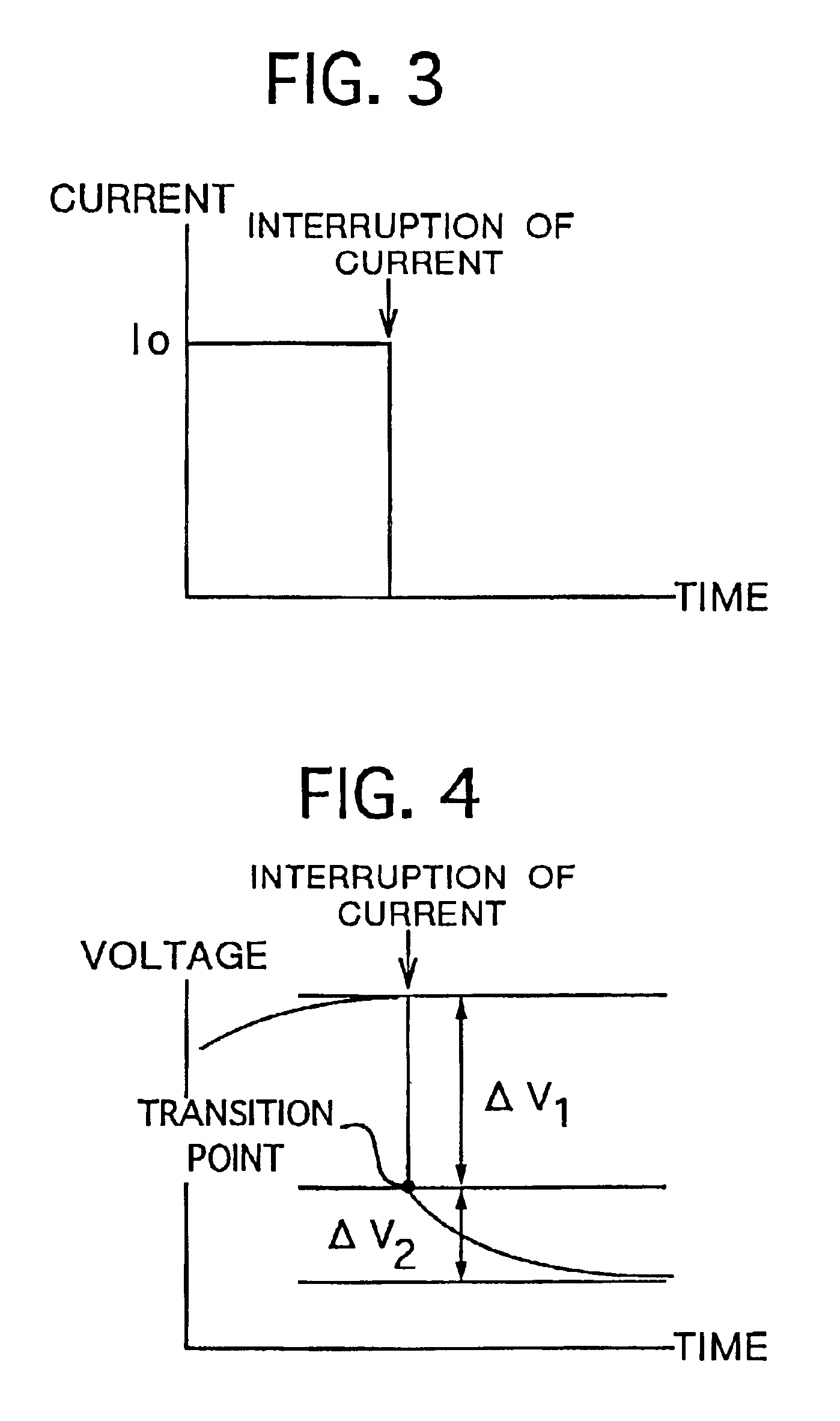Method and device for judging the condition of secondary batteries and method for regenerating secondary batteries
- Summary
- Abstract
- Description
- Claims
- Application Information
AI Technical Summary
Benefits of technology
Problems solved by technology
Method used
Image
Examples
modified embodiment 1
(Modified Embodiment 1)
[0298]The above-described judging method was applied to the judgement of the initial activity of the battery. This method can be also applied to the judgement of the battery life by merely changing the threshed Zacth of the AC impedance component Zac, and furthermore, the present level of degradation of the battery can be detected at all time by previously memorizing the relation between the battery degradation and AC impedance component Zav on a map, and substituting the calculated AC impedance component Zac into this map.
modified embodiment 2
(Modified Embodiment 2)
[0299]The above-described judging method was applied to the judgement of the charging and discharging performance of the battery 21 based on the AC impedance component Zac of the battery. It is clear that the charging and discharging performance of the battery 21 may be judged using the real axis component Zacreal of the AC impedance component Zac or the imaginary axis component Zacim thereof, preferably the real axis component Zacreal.
modified embodiment 3
(Modified Embodiment 3)
[0300]With the above-described judging method, the judgement was made based on the AC impedance component Zac of the battery 21. It is clear from the relationship shown in FIG. 16 that the charging and discharging performance of the battery may be judged based on the maximum work density which is obtained from the AC impedance component Zac.
[0301]Furthermore, it is possible to judge the charging and discharging performance of the battery based on some parameter including the AC impedance component Zac, such as all impedance z of the battery, and the judgement of the charging and discharging performance of the battery 21 may be made from the quantity of electricity related to the maximum power density (W / kg) of the battery 21, which is obtained by another method.
[Condition Judging Method 2-2]
[0302]Hereinafter, the device for judging the degradation of a combination battery for use in an electric vehicle, which uses the above-described condition judging method, ...
PUM
 Login to View More
Login to View More Abstract
Description
Claims
Application Information
 Login to View More
Login to View More - R&D
- Intellectual Property
- Life Sciences
- Materials
- Tech Scout
- Unparalleled Data Quality
- Higher Quality Content
- 60% Fewer Hallucinations
Browse by: Latest US Patents, China's latest patents, Technical Efficacy Thesaurus, Application Domain, Technology Topic, Popular Technical Reports.
© 2025 PatSnap. All rights reserved.Legal|Privacy policy|Modern Slavery Act Transparency Statement|Sitemap|About US| Contact US: help@patsnap.com



